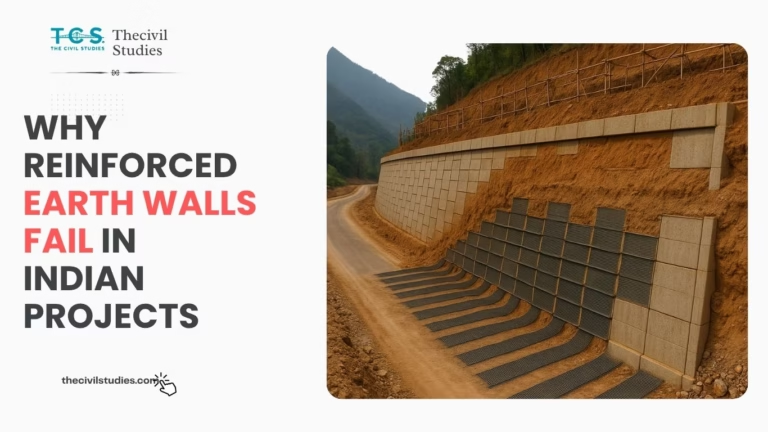
Why Silt Soil Causes Foundation Cracks
Are cracks appearing in your building’s foundation or walls?
If your structure stands on silt soil, you’re likely dealing with one of the most overlooked yet dangerous soil types for construction. This guide offers a deep technical breakdown of why silt soil causes cracks—and how engineers, builders, and homeowners can prevent long-term damage using modern soil mechanics principles

What is Silt Soil?
Silt soil consists of fine, powdery particles measuring 0.002 to 0.05 mm in diameter—smaller than sand but larger than clay. Commonly found in riverbeds, floodplains, and coastal zones, silt feels smooth when dry and slippery when wet. If you’re curious about what truly defines this soil type, one key property of silt soils plays a critical role in how it behaves under construction loads.
Key Traits of Silt Soil:
- High water retention (but poor load support)
- Prone to erosion and instability
- Moderate drainage but sensitive to saturation
- Shrink-swell cycles similar to clay, but more unpredictable
Why Silt Soil Causes Cracks in Buildings

1. Shrink-Swell Cycles Cause Ground Movement
Silt absorbs water easily and expands when wet—then shrinks upon drying. This repeated swelling and shrinking causes uneven ground movement, also known as differential settlement, which leads to:
- Cracks in foundation slabs
- Warping of floors
- Misalignment in doors/windows
2. Weak Load-Bearing Capacity
Silt has lower shear strength and compressibility, making it unreliable under heavy loads. This leads to:
- Sudden settling of footings
- Tilting of columns or walls
- Long-term structural damage
3. Vulnerability to Over-Saturation
Silt drains water slower than sand, but faster than clay. After heavy rainfall or poor drainage:
- The soil becomes over-saturated
- Load-bearing capacity drops drastically
- Foundation loses support and starts to sink or crack
4. Erosion and Surface Instability
Because silt is made of light, fine particles, it’s highly susceptible to wind and water erosion. This erosion can undermine the foundation1, especially in hilly or flood-prone areas.
Technical Perspective: Soil Mechanics Behind Cracking
Terzaghi’s Consolidation Theory
Silt undergoes primary and secondary consolidation when loaded. If the rate of loading exceeds the rate of water expulsion, pore pressure builds up and causes settlement—often delayed and uneven.
Low Shear Strength
Compared to sand and well-graded soils, silt has less frictional resistance. This increases the chance of foundation sliding or collapse, especially during seismic activity.
Capillary Rise
Silt allows water to rise above the water table due to its fine structure. This hidden moisture can deteriorate reinforcement steel and weaken the concrete matrix over time.

Real-World Case Study: Shri Ram Mandir, Ayodhya
During the Shri Ram Mandir construction, engineers encountered silt soil conditions. To ensure long-term safety:
- Deep pile foundations were installed to bypass weak silt layers
- Load was transferred to deeper, stable strata
- Extensive geotechnical testing was conducted to avoid future cracking or tilting
Engineering Solutions: How to Build Safely on Silt Soil
| Technique | Purpose |
|---|---|
| Deep Foundations | Reach stronger soil layers below the silt |
| Proper Drainage | Prevent waterlogging and over-saturation |
| Soil Stabilization | Use lime, cement, or fly ash to improve soil strength and reduce swell |
| Erosion Control | Mulching, vegetation, retaining walls |
| Geotechnical Testing | Conduct SPT, Atterberg limits, and permeability tests before design |
Silt vs. Sand vs. Clay for Construction

| Property | Silt | Sand | Clay |
|---|---|---|---|
| Particle Size | 0.002–0.05 mm | > 0.05 mm | < 0.002 mm |
| Water Retention | Moderate-High | Low | High |
| Drainage | Moderate | Excellent | Poor |
| Shrink-Swell | Moderate-High | Low | High |
| Erosion Susceptibility | High | Low | Medium |
| Crack Risk | High | Low | High |
Warning Signs of Silt Soil Damage in Buildings
- Diagonal cracks near windows and doors
- Uneven floor surfaces
- Gaps between walls and ceilings
- Doors/windows that don’t close properly
Conclusion – Build Smart on Silt, Not Just Strong
Silt soil may appear harmless at first glance, but it can silently compromise a building’s structural integrity if not properly addressed. Cracks, uneven settlement, and long-term instability often trace back to the unique characteristics of silt. The foundation of safe construction lies in understanding the detailed soil properties, conducting thorough geotechnical investigations, designing the right foundation systems, and managing water and erosion effectively over time.




